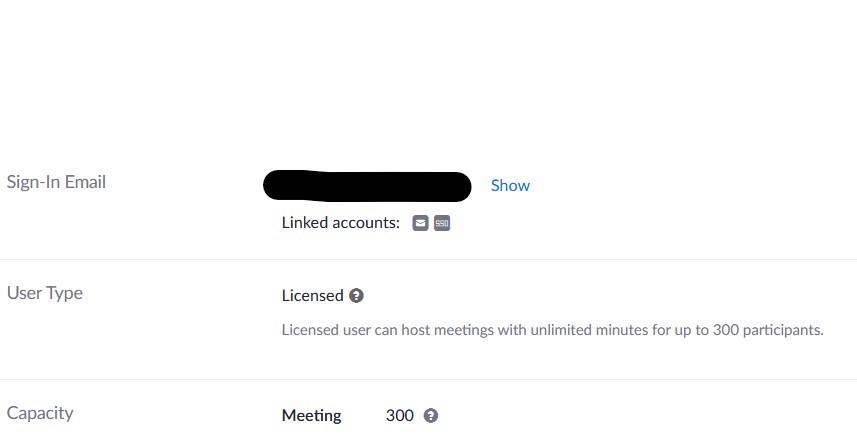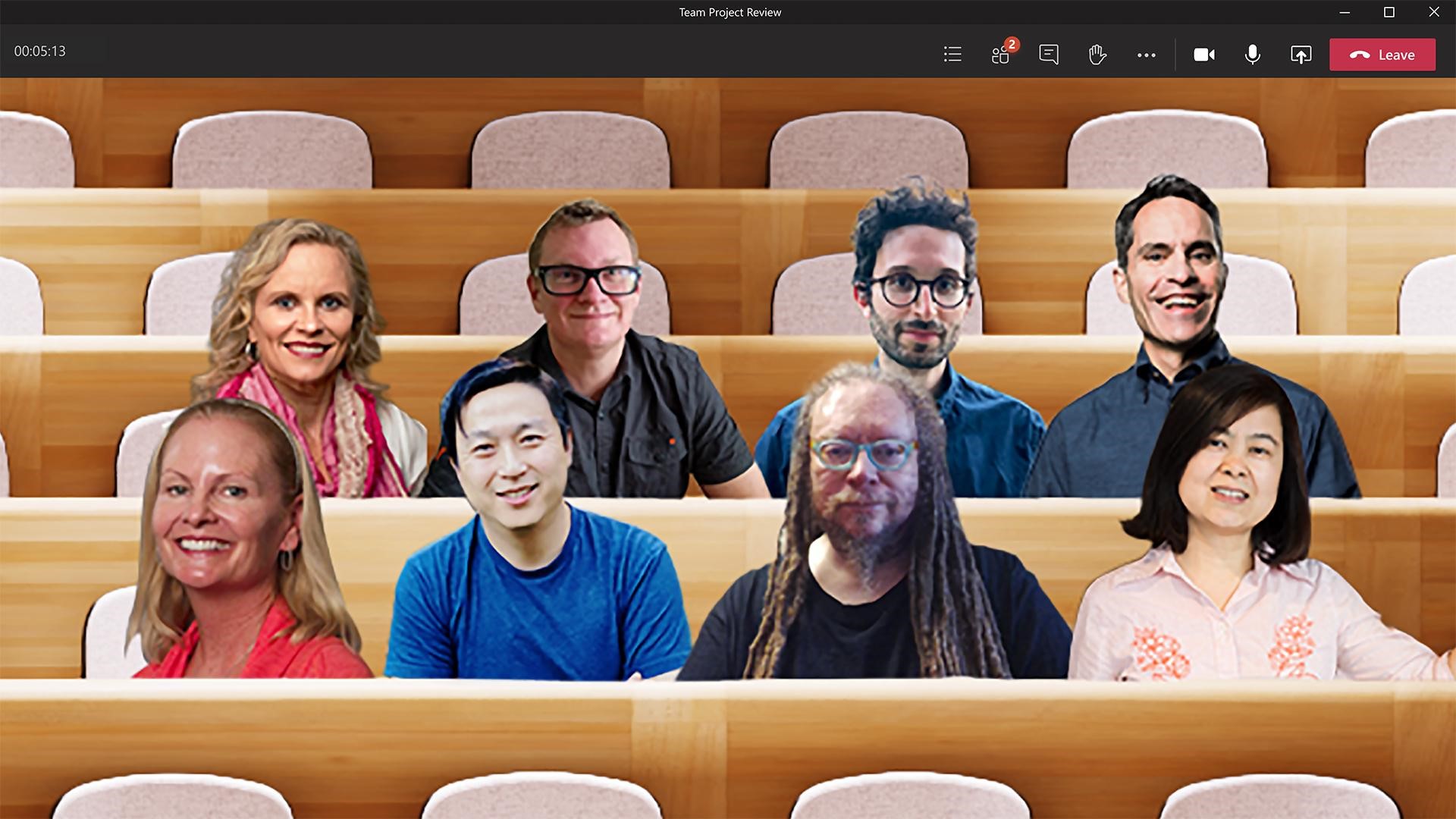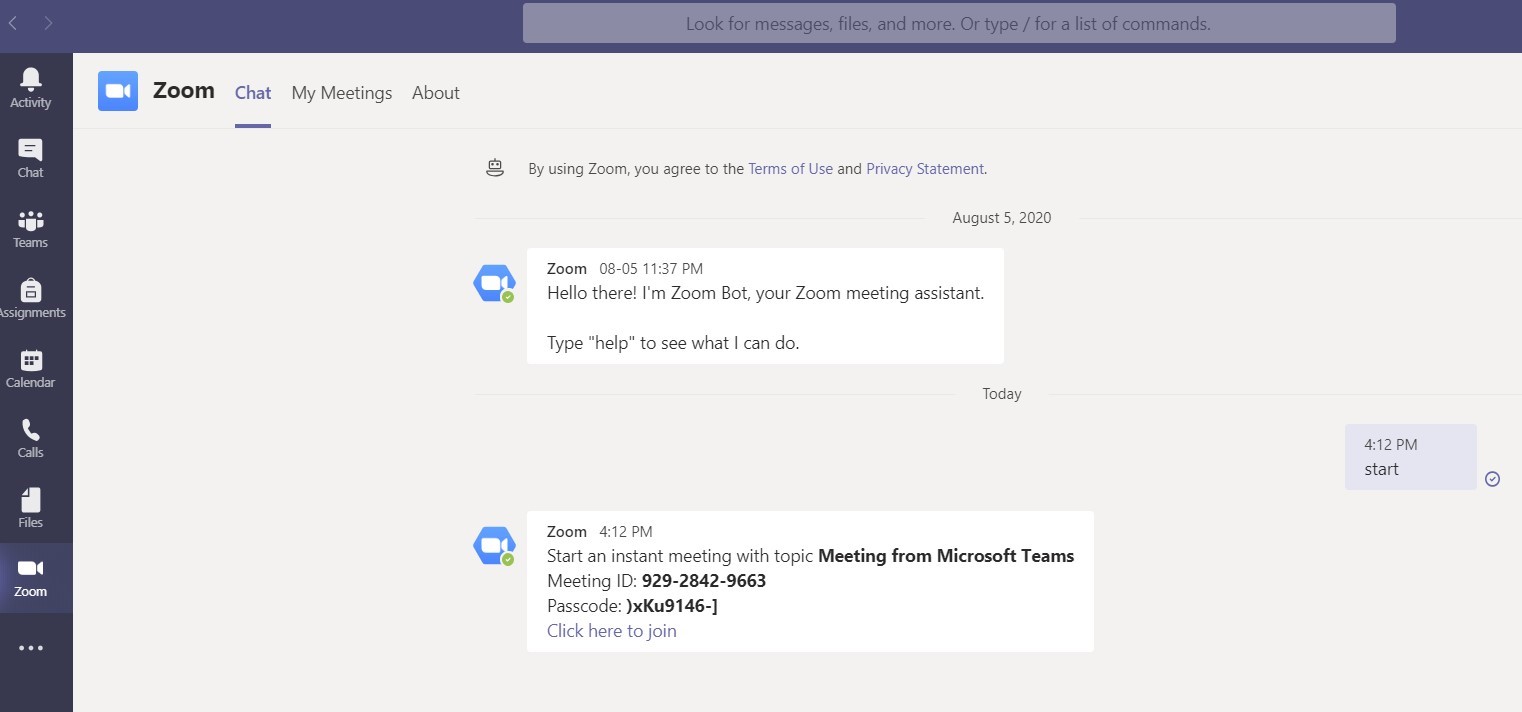Zoom vs Teams: a Choice to Make?
In the Winter 2020 semester, as teachers started moving classes online for emergency remote teaching, Zoom became a household name. In response, over the past few months Microsoft has expanded the possibilities of its Teams platform, part of the Microsoft 365 suite of tools. Which platform is best-suited for synchronous videoconferencing-based classes, whether part of an online-only or hybrid teaching strategy? And is it necessary to choose between one or the other? This article explores a few considerations and answers.
Availability and Desired Functionality
This may seem obvious, but an important first step in the decision-making process depends on the tools your institution puts at your disposal:
- Teams requires an institutional subscription to Microsoft 365 (formerly Office 365). The advantage is that all students can securely log in to the platform, and also have access to the other tools that seamlessly integrate with Teams (e.g., Word, Forms, Stream and OneNote).
- Zoom offers a free basic licence, but this limits group meetings to 40 minutes. If your institution subscribes to a pro plan, this limitation is lifted. To know which plan you currently have, log in to Zoom, choose My Account, then Profile. Clicking on the question mark icon next to User Type gives more information about its features.

On the Zoom website or application, choose My Account, then Profile to identify the type of license you have.
If both platforms are available to you, the next step involves examining your needs, further explored in the 2 sections that follow:
- Which videoconferencing functions am I looking for?
- Which other online activities am I planning to set up? Am I already using other online tools or platforms for these activities? If yes, which ones?
Videoconferencing Features
The following table compares the videoconferencing features of Teams and Zoom at the time of publication.
- Both organizations are releasing updates at a high pace; consult the announcements of new features on the Teams and Zoom web pages.
- As part of its institutional subscription, your college may control or limit certain functionalities; if a feature described below does not seem available to you, check with your college’s IT services.
| Features | Zoom | Teams |
|---|---|---|
| Waiting room | Individual and group chat functions are available in the waiting room. | Host can change which user types can bypass the Lobby. |
| Number of users | 300 (Pro license), 100 (Free license) See up to 49 screens per page (computer) or 4 participants (mobile) |
300 (up to 1,000 soon) See up to 49 screens per page (computer) or 9 participants (mobile). Together Mode places all participants together in a virtual reality environment. |
| Video and audio control | Host can mute audio and video from participants, but they can always activate it again. | Host can deactivate participants’ video and hard mute their audio, which blocks them from reactivating their microphone. |
| Recording | Depending on the plan, recording can be saved to the host’s local machine or to the cloud. Breakout rooms can only be recorded while the (co-)host is present in the room. | If enabled, the recording is saved to Microsoft Stream and the link is automatically posted in the team’s channel after the meeting. |
| Screen sharing | The host or authorized participants can share their screen, a specific window, or whiteboard. It is also possible to annotate the screen (useful when presenting a demo) or to share audio only. | The host or authorized participants can share their screen, a specific window, or whiteboard, with or without their computer’s sound. It is also possible to share a Powerpoint presentation, which each user can navigate and annotate individually. |
| File sharing | Files shared in the chat are only available during the meeting. | Files shared in the chat also become available under the Files tab for later reference. |
| Reactions | Participants can provide non-verbal feedback via buttons like ‘raise hand,’ ‘yes’ and ‘no.’ A thumbs-up and applause icon are also available from the main menu; they appear for a few seconds in the participants’ video. | Participants can ‘raise hand’. Emoji reactions and chat bubbles displayed within the participants’ video are being rolled out in fall 2020. |
| Live captions | Not available | Automatic live captions offer students an inclusive option. In recordings, these captions become searchable, allowing students to quickly find a topic that was discussed. |
| Chat | Saved locally as a text file. The host can enable/disable participants from saving the chat. | The chat transcript is saved within the application for later consultation. |
| Meeting notes | Not available | A Notes tab can be opened alongside the meeting window; they can be consulted by participants from the team’s channel afterward. |
| Breakout rooms | During a meeting, the host can automatically or manually assign people to small groups. This creates separate meeting rooms in parallel to the main room. | Breakout rooms have been announced for the last quarter of 2020. In the meantime, you can set up separate channels in the class team and ask students to join a meeting in the channel assigned to them. A complete procedure is available at the bottom of this article. |
| Interactive polls | The host can create and launch simple polls (multiple-choice, up to 10 questions); results can be downloaded as a file afterward. Only available in the Pro license. | The host can launch polls created in Forms or Polly during the meeting. The host can choose whether or not the poll remains active after the meeting ends (from the team’s channel). The results are compiled in Forms in the usual manner. |
| Reports | If your college requires students to log in, you can see a report that shows you which participants joined. If participants can join by simply clicking a link, this is not available. | While the meeting is active, the host can download a report from the Participants tab that includes join and leave times for all students (authenticated through their institutional Microsoft 365 account) |
| Integration with Microsoft 365 | Not available | Participants can collaborate on Office documents in the cloud. |
| Integration with LMS | Zoom links can be shared in messages or as clickable web links on any LMS. Some institutions offer a Zoom plugin on Omnivox or Moodle. | Teams offers many embedded apps. This makes it possible, for example, to open Moodle without leaving the Teams environment. |

Together Mode in Teams offers a novel way to group students’ moving camera images in a virtual reality space [image source]
Other Needs
Once you have established the videoconferencing features you require, consider any other activities you intend to organize and the platforms you plan to use for them. Limiting the number of different platforms makes your pedagogical practice more inclusive:
- Avoid selecting platforms with overlapping capabilities. For example, Teams, Léa (Omnivox) and Moodle all allow sending messages, distributing handouts and managing assignments. Using one platform—the one that best corresponds to your overall needs—for all of these functions is less confusing for students than using a different platform for different functions.
- Examine which tools and platforms can be linked or integrated. For example, some specific tools like Kahoot or Flipgrid can be added as apps to Teams, while others like H5P can be added to Moodle. The compatibility of the tools you already use may thus inform your choice between Teams or another platform.
Zoom offers a straightforward solution that you can combine with a learning management system (LMS), like Moodle or Omnivox, if the other functions they offer correspond to your needs. Zoom expands the capability of the LMS by adding videoconferencing capability that students can access by clicking the links you distribute. This makes Zoom user-friendly, even though it is a separate, standalone platform.
Teams acts as a hub, offering a more comprehensive environment that can be tailored to your pedagogical needs:
- Set up a team as a communication and collaboration space for each of your class groups
- Schedule video-based meetings in a fashion similar to Zoom
- Create channels (for example, for each topic, week, or module of your course) to share information and files with the class group, or part of it
- Use messaging to chat using text or video with one or more students; e.g., to hold virtual office hours
- Create and integrate surveys and quizzes with Forms, and administer them in a video meeting or in a channel, for students to take synchronously or asynchronously
- Create and distribute course notes and exercises using the integrated OneNote Class Notebook
- Set up and assign tasks, collect and grade responses submitted as files or completed in OneNote
- Integrate one or more of myriad plugins that allow you and your students to work with other tools commonly used in education without leaving the Teams environment (e.g., Flipgrid, Kahoot, Mindmeister, Prezi, Quizlet, Thinglink and Wooclap)
Zoom or Teams: Do I need to Choose?
Maybe you are interested in the functions Teams offers but got used to Zoom for video meetings last semester. Maybe foregoing Zoom’s breakout room functionality for the beginning of the semester is not an option for you. Does this mean you should forget about Teams? Absolutely not! A Zoom plugin is available for Teams, which means you can schedule and hold Zoom meetings right within the Teams interface, allowing your students to join class meetings in the same way.

The Zoom plugin makes it possible to schedule or start a Zoom meeting right within the Teams interface
The principal question is therefore no longer whether to choose Teams or Zoom, but to determine if you wish to use the other features Teams offers and if yes, if you want to use its native videoconferencing capabilities or the Zoom plugin. It’s all possible!
Editor’s Note:
I would like to thank Caroline Demers (Cégep Garneau) and Andrew Burton (Marianopolis College) for generously sharing their insight.
Procedure to facilitate small-group video discussions in Teams (native breakout rooms will become available in fall 2020)

